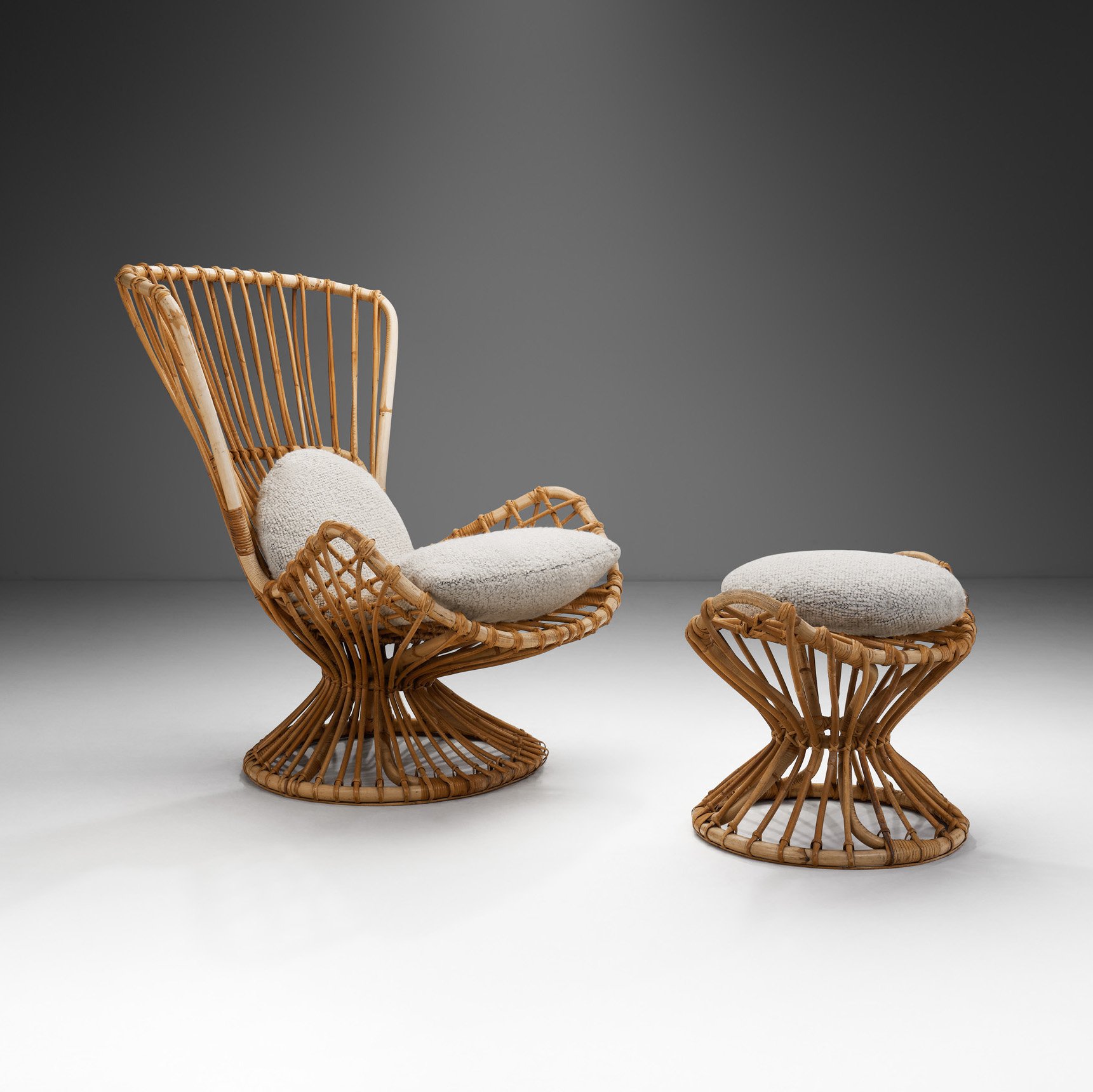“Oskar” Armchair by Carl Malmsten for O.H. Sjögren, Sweden 1930s
















“Oskar” Armchair by Carl Malmsten for O.H. Sjögren, Sweden 1930s
REQUEST PRICE HERE
Price category: 5,000 - 7,500 usd / eur
The ‘Oskar’ armchair was designed in 1939, the same year that Carl Malmsten participated in the New York World’s Fair. It was there that the expression “Swedish Modern” was coined, but Malmsten remained a traditionalist, mainly concerned with comfort in the home.
As with so many of Malmsten’s pieces of furniture, ‘Oskar’ was modelled on an earlier design – his own or from previous generations. This armchair belongs to Carl Malmsten's earlier works, and the structure is traditionally made of solid pine from Swedish forests. As can be expected from the “Master of Wood”, the frame is expertly designed, with ergonomic and aesthetic principles at its core. While this armchair may seem less “Malmstenesque”, it already has the gentle curves that defined Malmsten’s later designs. This is especially visible in the flowing armrests that descend from the top, curling outwards to create a welcoming look. The gently bent backrest is tufted with dark yellow stitches that contrast with the light bouclé upholstery, both in colour and texture to create a stylish, visually interesting look. The structure is supported by the tapered, solid pine legs that add an organic touch to the design.
The design is reminiscent of the furnishings of the sitting room of Ulriksdal Palace, which was given to the crown prince and princess, Gustav and Louise, by the Swedish people in 1923. Malmsten was commissioned to create the decor for the room, and the ‘Oskar’ armchair may have been a template for this period, and perhaps that is why Carl Malmsten gave the chair a royal-sounding name. The company known today as O.H. Sjögren was established as early as the 1870s. Carl Malmsten, who had hitherto only produced the most exclusive and unique furniture for a limited and affluent clientele, sought manufacturers who were able to produce his furniture in larger volumes without compromising the high demands he placed on craftsmanship and quality. He chose O.H. Sjögren, and together they developed and marketed the many items of upholstered furniture that have become classics today.
Condition:
In good vintage condition. Wear consistent with age and use. The chair has been reupholstered recently in a premium bouclé fabric.
Dimensions:
28.74 in W x 29.92 in D x 37.4 in H; Seat height 16.33 in
73 cm W x 76 cm D x 95 cm H; Seat height 41.5 cm
About the Designer:
Carl Malmsten (December 7, 1888 – August 13, 1972) was a Swedish furniture designer, architect, and educator. Malmsten was born in Stockholm, Sweden. Malmsten's career took off when he won a competition in 1916 to design furniture for the Stockholm City Hall and shortly after in 1917, he exhibited alongside well-known Swedish architects such as Gunnar Asplund and Uno Åhrén.
In the 1920s he was invited to furnish a room for the crown prince, Gustaf VI Adolf, and his wife Louise in Ulriksdal Palace. He was honoured with an inaugural Prince Eugen Medal for design in 1945. Already as a young designer in the early 20th century, Carl Malmsten advocated an artisanal furniture design based on local ingredients and traditions, available to a wide audience at a reasonable price.
Nature was Carl Malmsten's foremost teacher and source of inspiration. He conveyed his love of craftsmanship as a teacher in his own schools, at Olofskolan in Stockholm, Capellagården on Öland and the Carl Malmsten school on Lidingö, today a branch of Linköping University and one of the country's leading design colleges. As a debater, Malmsten stormed against functionalism, but in retrospect it can be seen that his ideas often coincided with the rational and frugal style ideals of function.
Malmsten has had a lasting influence on Swedish furniture design through the two schools he founded—the Carl Malmsten Furniture Studies (Carl Malmstensskolan), which has been a part of Linköping University since 2000, is situated on the island of Lidingö on the outskirts of Stockholm. Carl Malmsten spoke about the importance of tradition, craftsmanship and the nation. His furniture was in many ways a product of the thoughts and ideals of the time, they have a timeless quality that makes them just as relevant and loved today. ~H.












